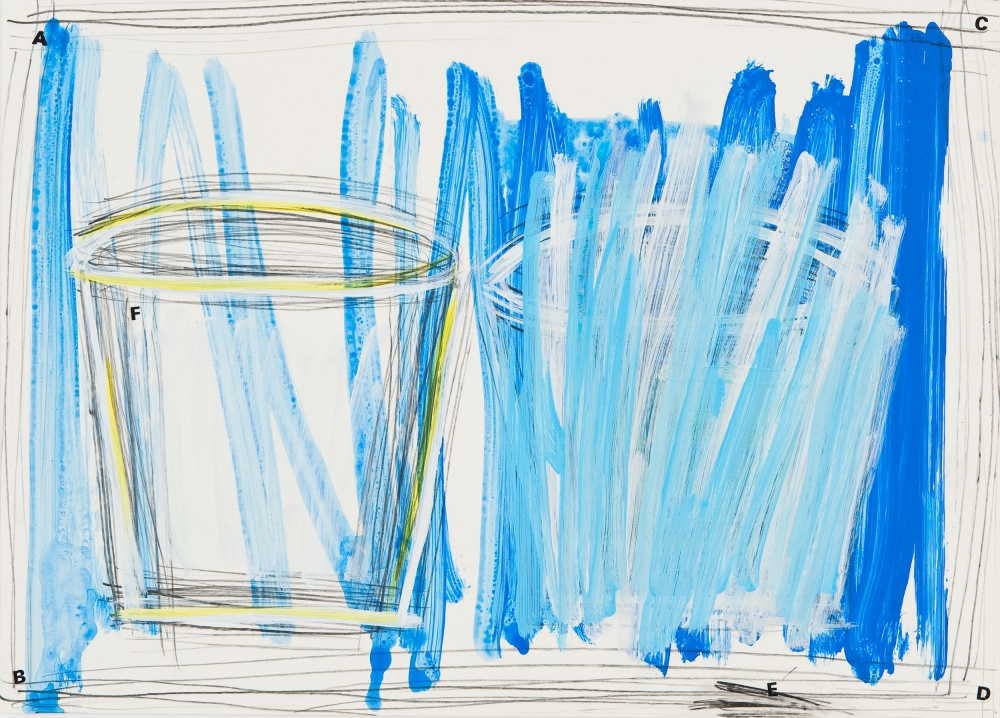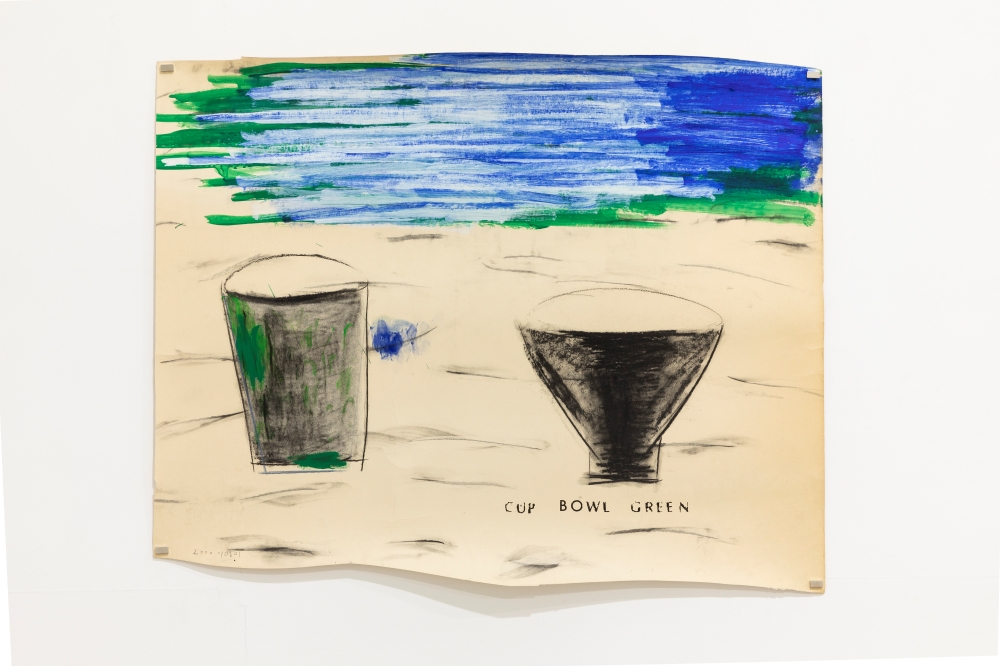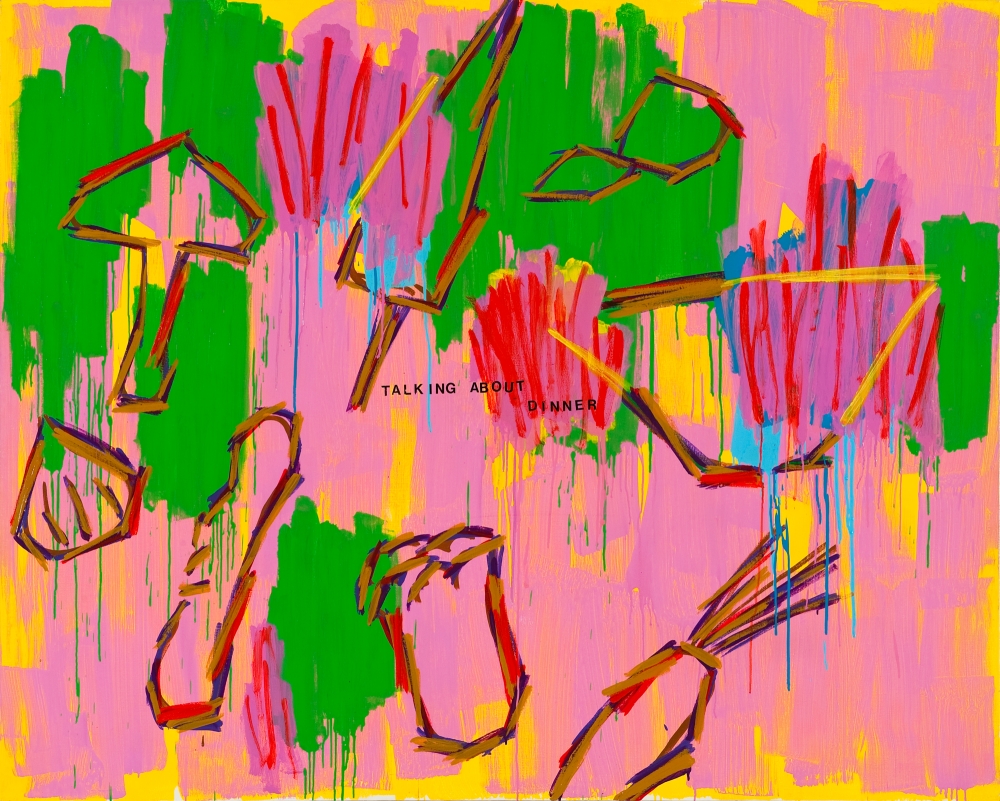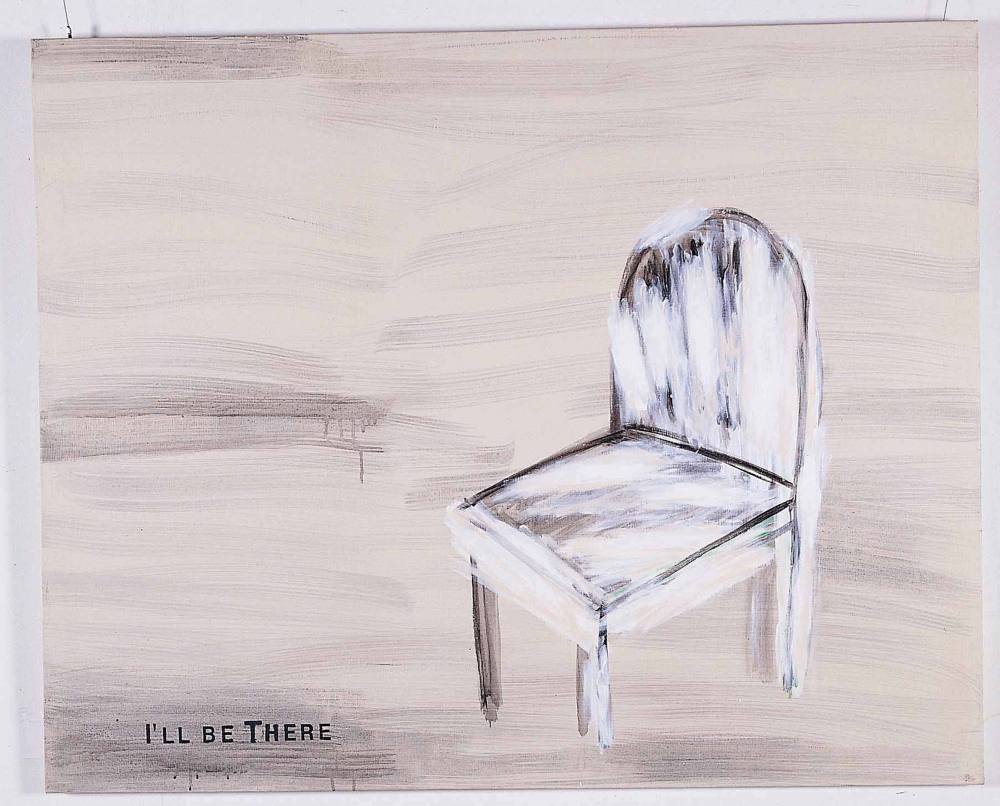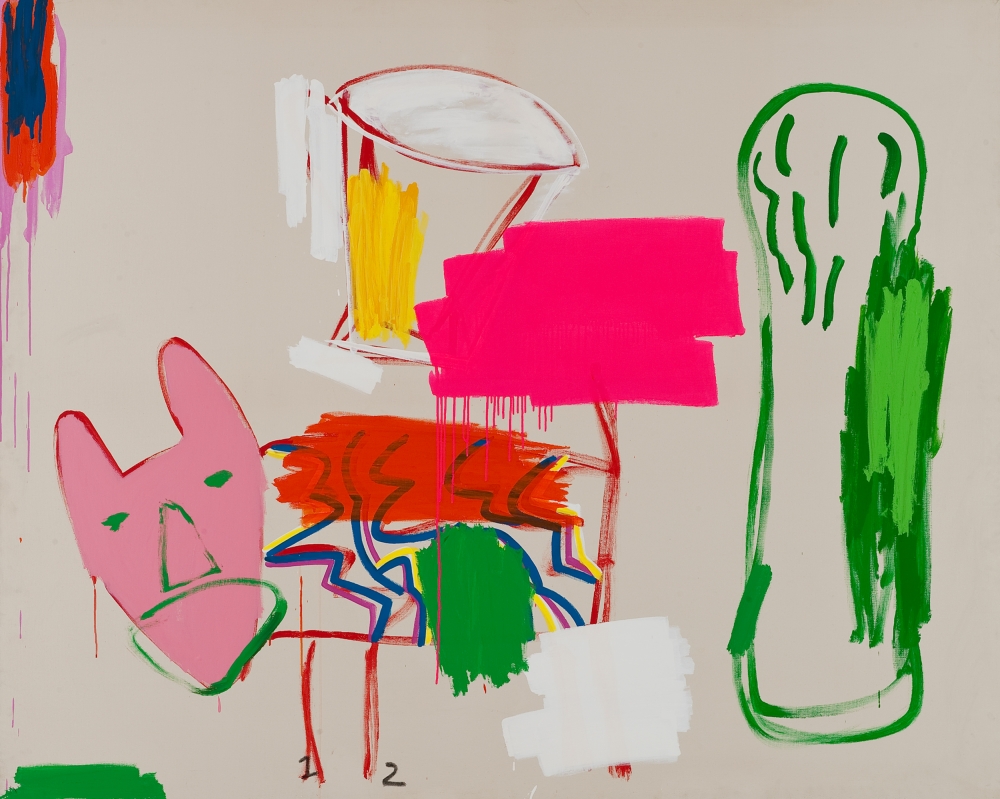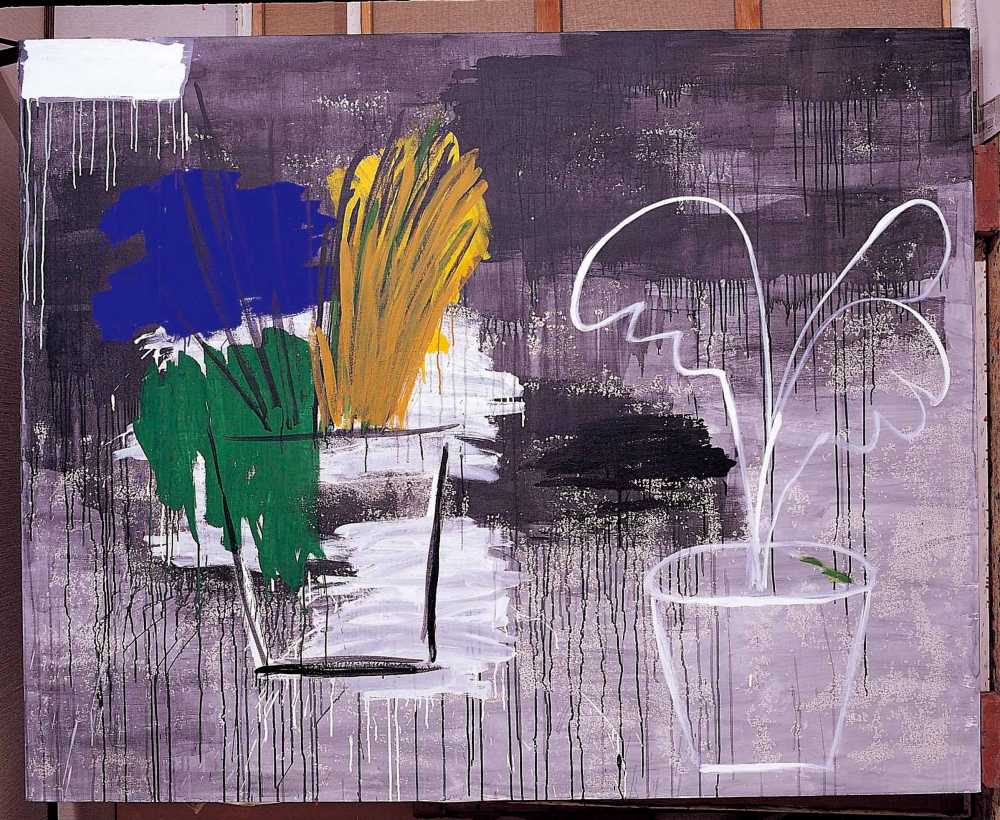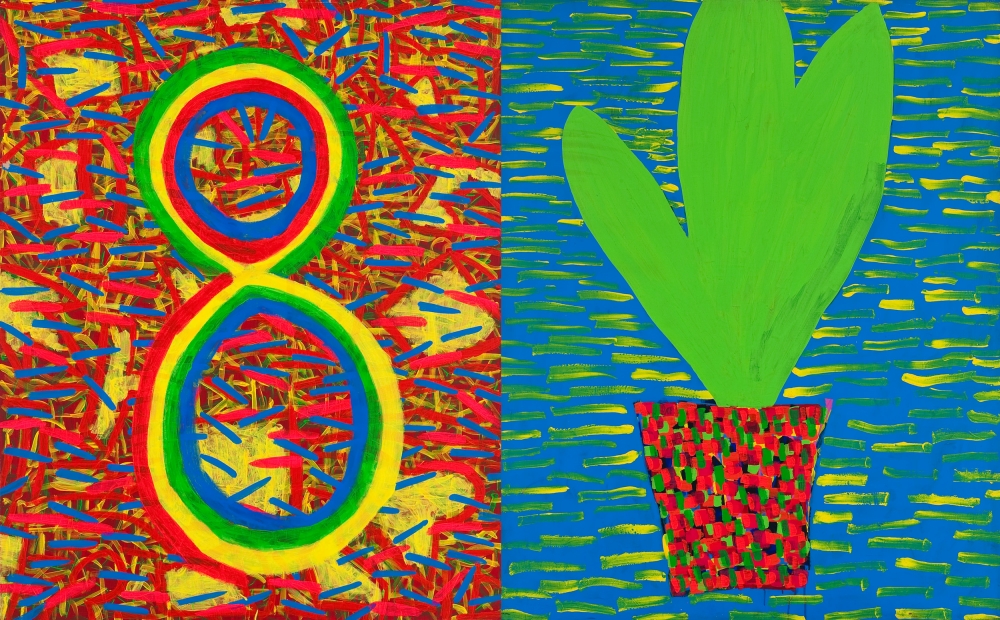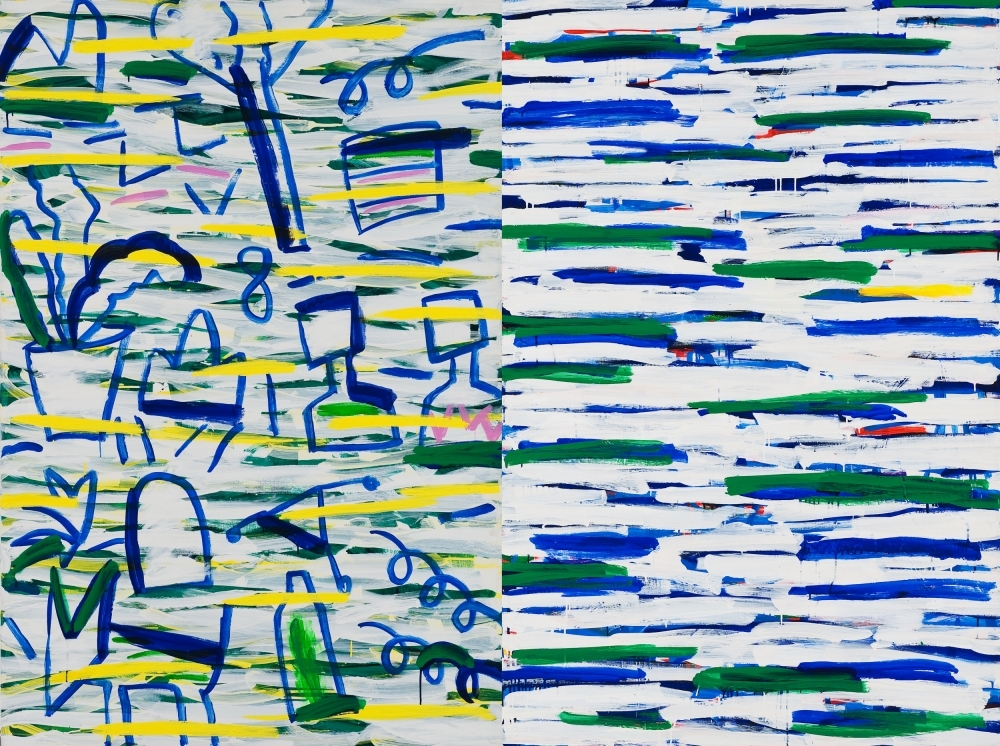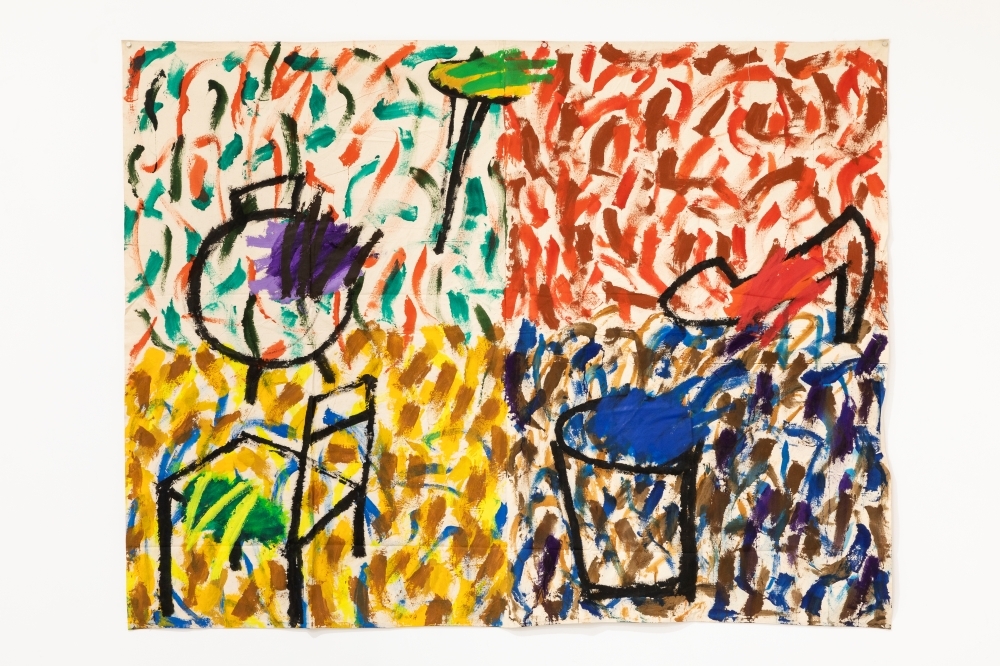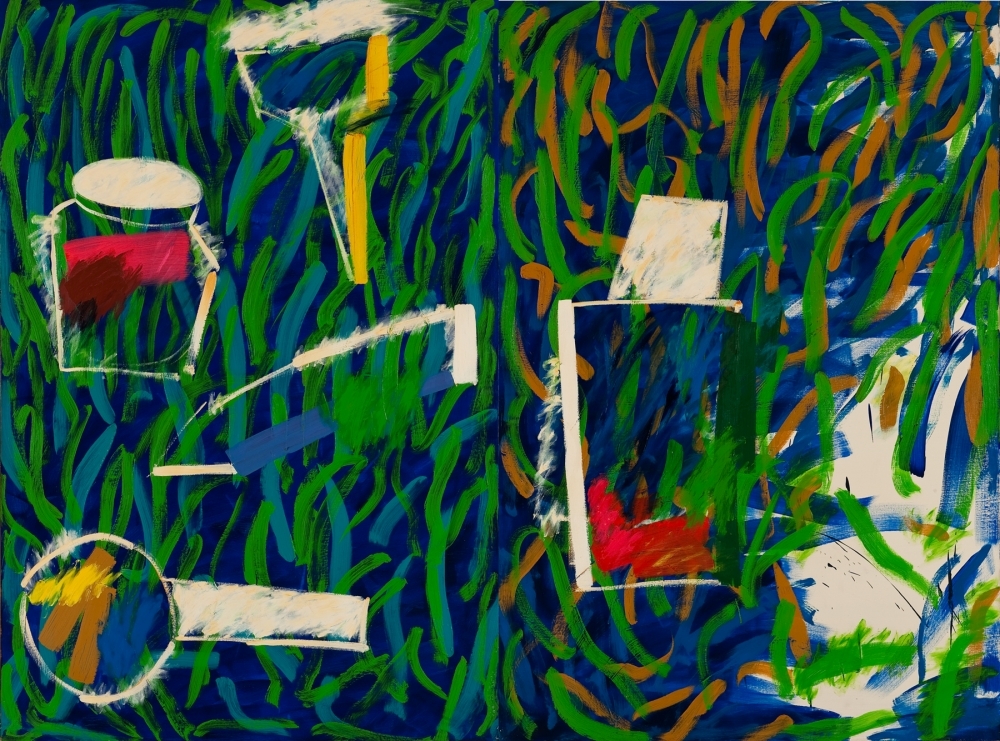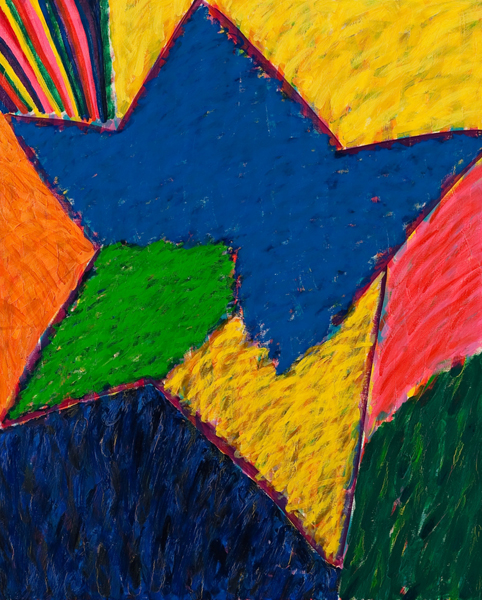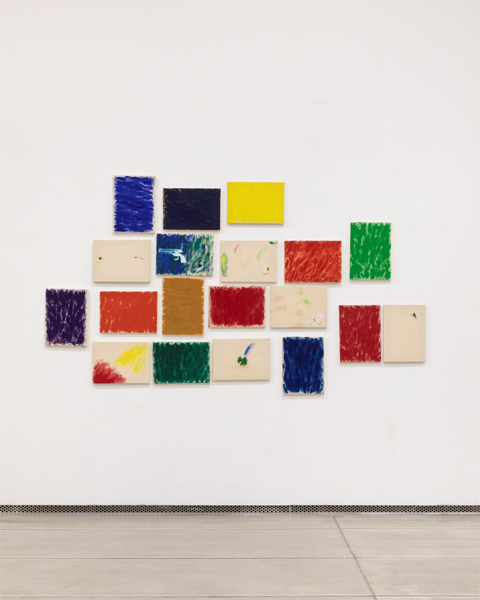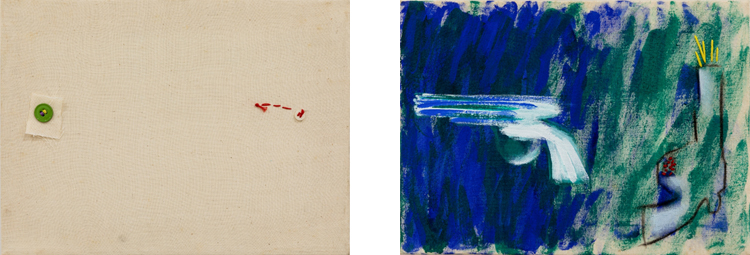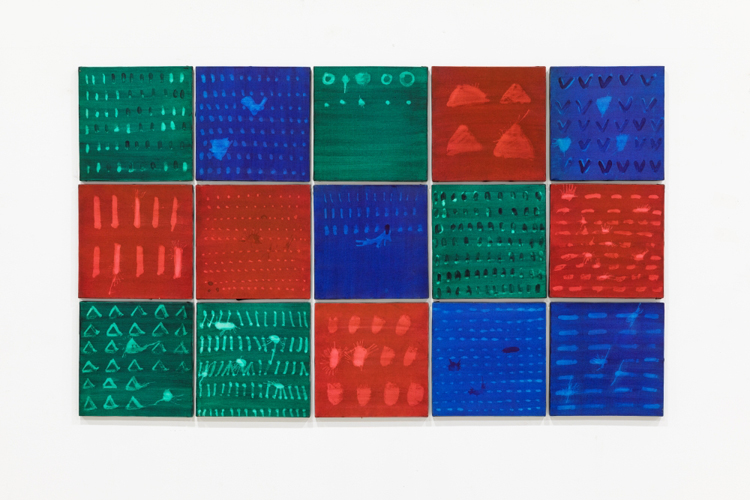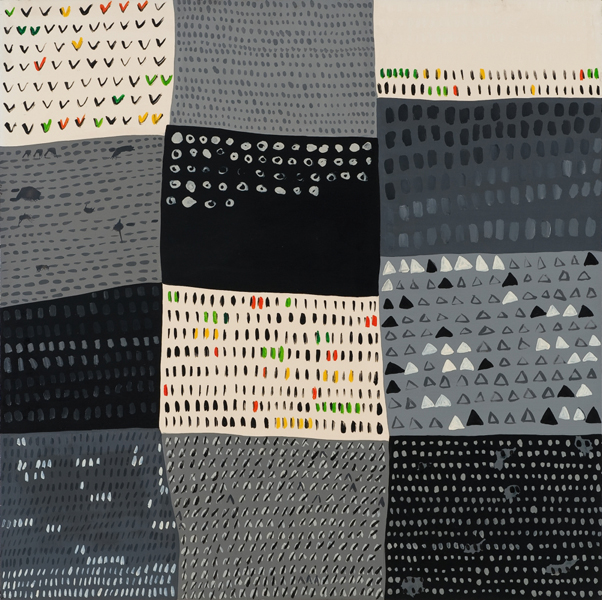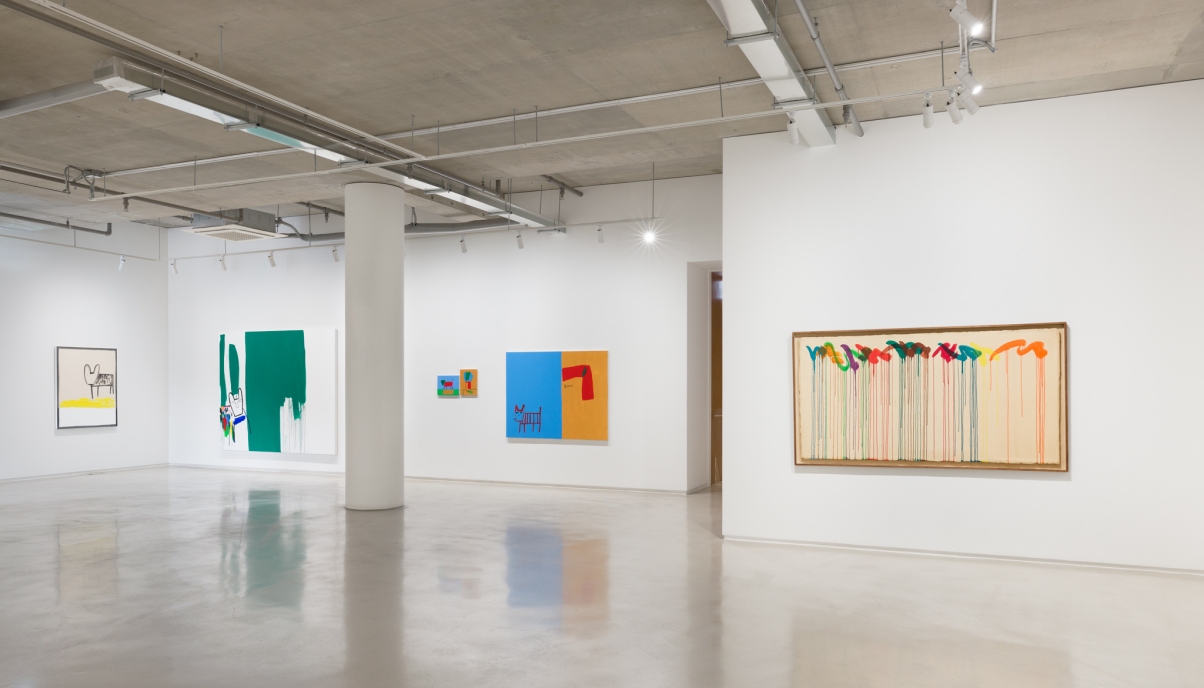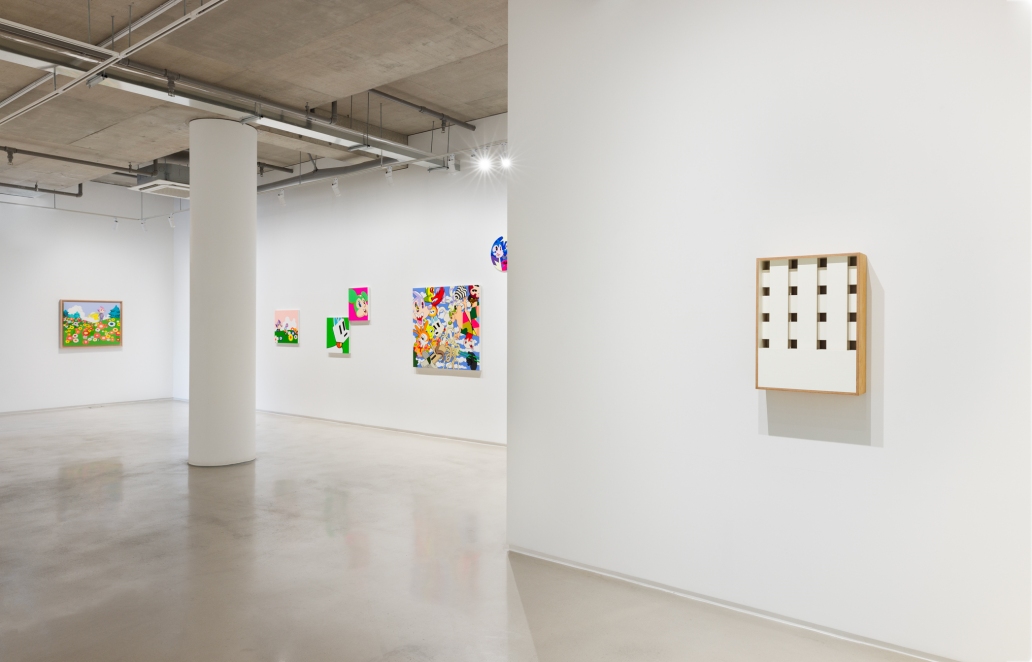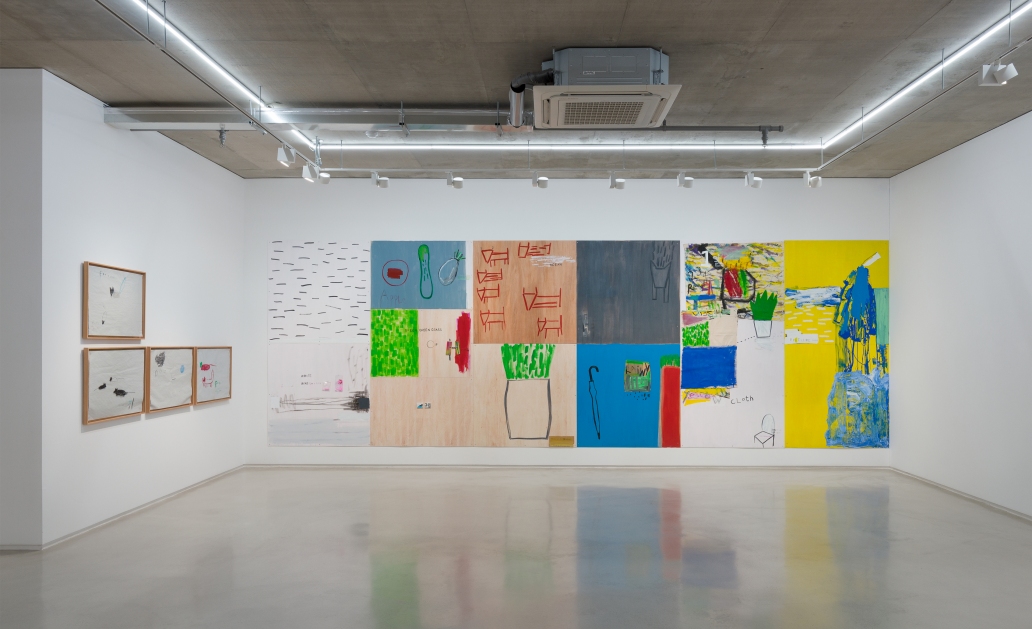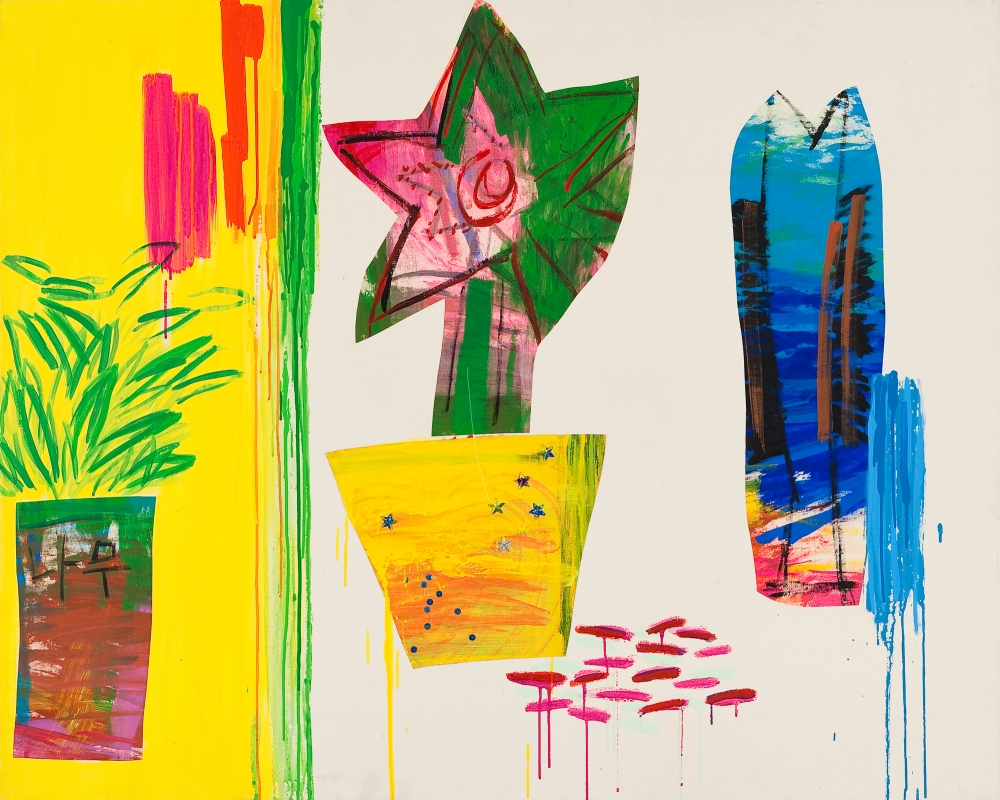
Myungmi Lee

Biography
Lee Myungmi broke free from the aesthetic conventions of the Korean art world in the 1970s, where monochrome paintings held sway, and established her own unique art world through her use of primary colors as well as her paintings that encompass figurative and abstract art. She was one of the initiators of the Daegu Contemporary Art Festival in 1974, which is widely regarded as a key turning point in the history of Korean contemporary art. Lee’s works from this period tend to be conceptual and minimalistic. Later, she presented colorful and jovial works, which went against the ascetic mood of the time. In addition to her canvas works, she has completed her own style of painting as a platform for playing, healing and communicating—using flat materials such as cloth and paper. The artist mainly uses such everyday objects as cups, chairs, flowers, flowerpots, animals, and people. However, instead of imbuing each object with meaning, she captures the essence of the form by using bright and vivid colors, and opts for simple compositions and flat structures with no regard for perspective or gravity.
Lee Myungmi(b.1955) held solo exhibitions at Tokyo Gallery, INKONG Gallery, Daegu Art Museum, Indang Museum, PIBI Gallery, Wooson Gallery and more. She participated in many group exhibitions of avant-garde art that formed the basis for the birth of Korean contemporary art, including Daegu Art Museum, Busan Museum of Art, Kyoto Museum of Art, Museum of Contemporary Art Busan and more. Lee’s works adorn the walls of various institutions and enterprise buildings including the National Museum of Contemporary Art, Daegu Art Museum, Daegu Bank, Daegu Culture and Arts Center, POSCO, Hongik University Museum, Busan Museum of Art, Hyundai Heavy Industries Co., Ltd., and more.
이명미는 단색화가 주류를 이루던 1970년대 한국 화단의 미학적 관습에서 벗어나 자유로운 원색의 구사, 구상과 추상을 아우르는 회화로 독자적인 예술세계를 구축하였다. 이명미는 한국 현대미술사의 주요한 전환점으로 인식되는 1974년 대구현대미술제 발기인으로 참여하였는데, 이 시기 작품은 개념적이고 미니멀한 경향을 보였다. 이후 당시의 금욕적인 분위기에 저항하는 컬러풀하고 유쾌한 작업을 전개하였고, 캔버스 작업뿐 아니라 천, 종이 등 평면적 재료를 이용해 다양한 방식으로 일련의 놀이이자 치유와 소통의 장으로 자신의 회화를 완성한다. 캔버스 작업 뿐 아니라 천, 종이 등 평면적 재료를 이용해 다양한 방식으로 일련의 놀이이자 치유와 소통의 장으로 자신의 회화를 완성한다. 작가는 컵, 의자, 꽃, 화분, 동물, 사람 등 일상적 대상을 주요 소재로 사용하지만, 각각의 대상에 의미를 담기 보다는 그 형상의 본질을 포착하고 밝고 강렬한 컬러를 사용하여 원근법이나 중력을 무시한 채 단순한 구성과 평면적인 모습으로 그려낸다.
이명미(b.1950)는 1977년 그로리치 화랑에서 첫 개인전을 시작으로, 서울화랑, 코마이화랑, 동경화랑, 갤러리THAT, 인공갤러리, 대구미술관, 인당미술관, 피비갤러리, 우손갤러리 등의 개인전과 “Indepandant”(1972-79), “국전(國展)”(1972-75), “대구현대미술제”(1974-76), “Ecole de Seoul”(1983-91)을 비롯한 <한국여성미술제>(1995), <아시아현대미술제>(1978), 촌송화랑, 타이페이미술관, 후쿠오카시립미술관, 교토시립미술관, 뮤지엄 산, 부산현대미술관 등 다수의 단체전에 참여하였다. 이명미의 작품은 국립현대미술관, 대구미술관, 대구은행, 대구문화예술회관, 포스코, 홍익대학교 박물관, 부산시립미술관, 현대중공업 등 다수의 기관 및 기업에 소장되어 있다.
